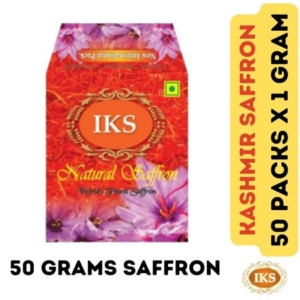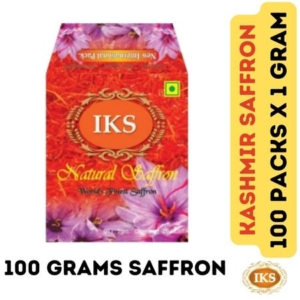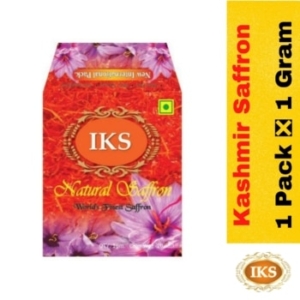Buy Kashmir Saffron Online in Singapore
Buy Kashmir Saffron Online in Singapore – India Kashmir Saffron is reputed arm of our company in the international market for wholesale & retail of Kashmiri Saffron in Singapore. We directly procure Kashmiri Kesar from Kashmir Farmers and retail it in Beautiful, Elegant Paper Packing to maintain Freshness of Saffron for very long time. We feel immensely proud that due to our valued customer oriented approach, we are one of the top Saffron supplier firms in Singapore (Central Region, East Region, North Region, North East Region, West Region).
One of the main essences behind our success is that, we follow strict quality standards to ensure our clients get the worth they are paying for. These well established quality standards are followed in packaging as well as in delivery too. Each packaging is manually checked by our experts to ensure optimum quality. These customer oriented policies have been the backbone of our work process and we work towards achieving 100% customer satisfaction.
Let customers speak for us
from 101 reviews30 Interesting Facts about Saffron (Kesar / Kumkum Puvvu)
1) The plant originally came from Asian countries where it is still mainly produced: Iran alone accounts for 90 per cent of the total quantity harvested worldwide but Kashmir Saffron is considered best in quality and aroma.
2) To remove its bitter aftertaste, here is a chef’s tip: press the threads between two aluminium sheets before use.
3) Together with turmeric, coriander, cumin, chilli pepper and other spices, it is one of the star ingredients in this Indian spice mix of worldwide fame.
4) Among the most well-known dishes containing saffron, French bouillabaisse, pilaf and Asian biryani, Spanish paella and, last but not least, saffron cake from Britain are all experiences not to be missed.
5) It takes 80,000 flowers to produce a pound of saffron (453 grams), with a cost in the range of 600 to 2,000 dollars (a pound), prices that make saffron the most expensive spice in the world Flower Saffron stigmas are gathered when the violet-blue flowers open and every flower produces 3, each one of which is about 25-30 millimetres long.
6) Some writers claim, however, that it comes from Greece, where it was found for the first time on the Island of Crete during the bronze age.
7) Harvest time is autumn, and the process must be carried out by hand, usually by specialized pickers, almost always women, who detach the 3 stigmas one by one.
8) The 3-coloured Indian flag is saffron (to represent Hindus), white (for peace) and green (for growth).
9) In the hit song by Donovan entitled “Mellow yellow” the most well-known jingle that everyone sings under their breath is dedicated to this spice: “I’m just mad about Saffron, Saffron’s mad about me”
10) Among the varieties most hard to find on the market is the saffron coming from the Indo area of Kashmir. Here they produce the darkest variety in the world which tends towards a purple-brown colour, called Mongra or Lacha.
11) During harvesting, on the Spanish plain of La Mancha it is customary to burn some stigmas on a low fire to diffuse the spicy aroma of saffron in the air.
12) Owing to its colouring properties, in ancient times it was used as a cosmetic, as well as for dyeing fabric and leather.
13) In the Middle Ages in Nuremberg, whoever adulterated saffron with the addition of less precious ingredients, was burnt alive.
14) To combat drug trafficking, in Afghanistan a project has been set up to replace illegal opium poppy plantations with saffron.
15) A natural medicinal, it has been used since time immemorial for its antibacterial and antiviral properties, and is excellent for treating stomach-ache, coughs and bronchitis.
16) The most famous dish in the world is saffron risotto, using stock made from bowling fowl, which comes from the Italian city of Milan and is known worldwide.
17) The stigmas of Crocus sativum (the Latin name for saffron) are only picked at dawn, before its flowers open, in order to preserve its aroma and properties.
18) On a par with sommeliers and cheese tasters, saffron too has its specialists, who decree which varieties are the best.
19) The main ingredient of magic potions in ancient times, it used to be sprinkled between the sheets and brewed in tea to make a man fall in love or to dispel melancholic thoughts.
20) In the region of Oxiana, between Iran and Afghanistan, little girls only are allowed to pick saffron. They have to be virgins or under 13, or so the legend goes.
21) It is possible to buy wines aromatized with saffron, as well as many liqueurs, comprising vodka and gin, which are renowned for their digestive properties.
22) From Cleopatra onwards, it is said that the aroma lingering on the skin after a hot saffron bath is enough to make any lover go mad with desire. Yellow Also named “angel hair” because of its colour, the word saffron derives from Arabic: Za’feran and da asfar, meaning yellow.
23) A very rare variety of saffron is produced in this tiny Italian village, while the most precious saffron in the country comes from the valleys close to the city of L’Aquila in Abruzzo
24) During his Asian campaigns, Alexander the Great used Persian saffron in his infusions as a curative for battle wounds.
25) Damp and hot conditions damage saffron crop which can tolerate extreme low temperatures (even less than minus ten degree Celsius).
26) Saffron has also been used as a fabric dye and in perfumery, particularly in China and India.
27) Modern medicine has discovered saffron as an active anti-mutagen, immune modulator, anti-depressant, antioxidant and sex-stimulant.
28) It is believed to help in ailments like indigestion, high blood pressure, menopausal problems, gastro intestine and scabies.
29) Kesar is also referred for lions, as the standard complexion of lions is saffron.
30) The name Saffron comes from the Arabic word,” zafaran ” which means yellow and it is the official color of Buddhist robes in India.














